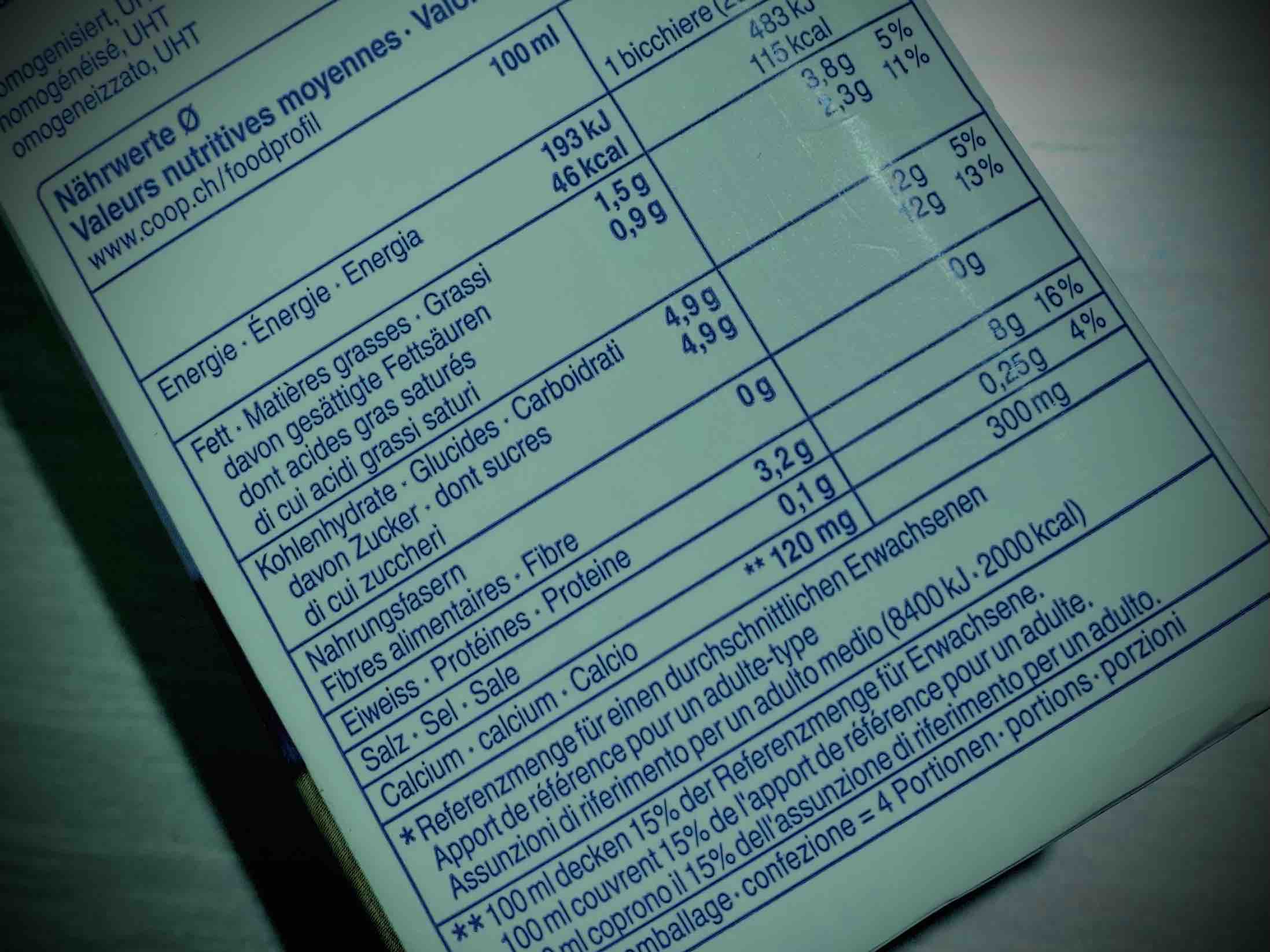
Food labelling: legal requirements, country of origin and risk of misleading
Food labelling is one of the most important means of communicating information to the consumers which helps them make informed decisions when purchasing products. Inter alia, an indication of origin is of particular interest, as it may draw consumers’ attention and encourage to buy the product. For instance, some consumers prefer to consume local food products to support their local farmers or choose food products originating from a particular country relying on its good reputation or other reasons.
Food business operators must ensure the labelling of their products complies with legal requirements of those countries where such products are sold. In any case the food labelling shall not mislead consumers as to the characteristics of a food product, including its nature, properties, composition, quantity, country of origin etc. Non-compliance of the food labelling may entail significant business losses, inter alia those related to imposition of fines, destruction of packaging containing non-compliant labelling as well as damaged reputation of the food market operator.
Food labelling: various legal requirements in different countries
Different countries have various legal requirements for food products labelling. As a rule, local legislation establishes detailed general requirements for both mandatory and voluntary information on food products, as well as special requirements for labelling of particular types of food products (for instance, baby food, cocoa and chocolate products, alcoholic beverages, dietary supplements, organic products, fruit juices, natural mineral water, honey, fruit jams etc.). Quite often countries establish requirements for the font of the food labeling, the colour of the background and the text of the labelling etc. Besides, some countries apply special rules for indicating the country of origin or place of provenance in the labelling of particular food products, for instance, olive oil, honey, meat products.
For instance, food labelling in the European Union is regulated, inter alia, by the Regulation (EU) No 1169/2011 on the provision of food information to consumers, the Regulation (EC) No 1924/2006 on nutrition and health claims made on foods, Commission Implementing Regulation (EU) 2018/775 laying down rules for the application of Article 26(3) of Regulation (EU) No 1169/2011 on the provision of food information to consumers, as regards the rules for indicating the country of origin or place of provenance of the primary ingredient of a food, etc.
After Brexit (i.e. the withdrawal of the United Kingdom from the European Union), some legal requirements of the UK for the food labelling and respective procedures differ from the requirements of the EU. It is expected that over the time this difference in the legal regulations of the UK and the EU will increase.
Switzerland has stringent labelling requirements for food products. Though Switzerland is not a member of the EU, it has already made an effort to harmonize its food legislation to a greater degree with its EU neighbours.
Besides, Ukraine is in the process of harmonization of the Ukrainian legislation with the EU law. Ukraine has already started to apply a number of the EU approaches as regards information on food products, including nutrition and health claims.
The USA and Canada have their own unique requirements and approaches to the food labelling.
Origin of food products: the European approach
The EU legislation states that the indication of the country of origin or of the place of provenance of a food product should be provided whenever its absence is likely to mislead consumers as to the true country of origin or place of provenance of that product. In all cases, the indication of country of origin or place of provenance should be provided in a manner which does not deceive the consumer.
For instance, according to the EU legislation it is mandatory to provide information on the country of origin or place of provenance of a food product:
- if failure to indicate this might mislead the consumer as to the true country of origin or place of provenance of the food product, in particular if the information accompanying the food product or the label as a whole would otherwise imply that the food product has a different country of origin or place of provenance;
- for certain types of meat, etc.
Since April 2020 the EU legislation requires food business operators to label food products with the origin of primary ingredients, if the origin of the products’ primary ingredient is not the same as that of the food product indicated on its label.
Misleading labelling of food products: law enforcement practice
Quite often the food products labelling is subject to scrutiny of competent state authorities of the countries where such products are sold. Misleading information is not necessarily false (though it can be), but instead it can be factually true information that is incomplete, inaccurate or presented in such a way that the meaning of the information is distorted.
For instance, the product labelling may mislead consumers if it omits certain facts or its wording is vague. In some cases the competent state authorities claim that the labelling is misleading even if it contains true information, provided that necessary information is presented in such a way, that it is not visible, easily accessible to consumers. Besides, the perception of the information is accessed in each particular case, taking into account the font and colour of the text, the colour of the background, availability of pictures etc.
There were a lot of cases when the competent state authorities of different countries considered information of food packaging to be misleading and imposed significant fines on food business operators, for instance:
- In Australia a food company Heinz was fined for the total of AU$2.25 million (approx. US$1.65 million) for misleading packaging of its Little Kids “Shredz” products, i.e. for allegedly misleading health claim that its products were beneficial to the health of children. In particular, the Australian court emphasized that:
- the statements on the packaging, that the Shredz snacks comprised 99% fruit and vegetables, together with the pictures of the fruit and vegetables, conjured impressions of nutritiousness and health;
- though the products were indeed made from 99% fruit and vegetable ingredients and did not contain any preservatives, artificial colours or flavours, they had a high sugar content;
- a representation that a product containing approximately two-thirds sugar was beneficial to the health of children aged 1 to 3 years was misleading.
- The French competent state authority considered the absence of the picture of an apple on an apple-tropical fruit juice packaging to be misleading because apples represented 70 % of that fruit juice mixture.
- A Canadian company was fined for the total of $400,000 for labelling and selling thawed fish as fresh fish.
- An Italian court imposed fines for the total of over one million euros on several manufacturers of potato crisps for using misleading texts and images to portray industrially produced food products as “hand cooked” or “artisanal”.
- The Consumer Protection Authority of Poland found out that the picture of cherries and the word “cherry” on the packaging were misleading, though the name of the product “Cherry flavoured fruit syrup” implied that the syrup contained only cherry flavouring and not natural cherry juice.
- The competent authority of Poland considered packaging of cocoa waffles “Lusette chocolate” to be misleading because the packaging contained pictures of chocolate. Though the product indeed contained 0.5 % chocolate, it was position of the Polish state authority that the picture of chocolate on the product packaging implied that the product contained considerably more chocolate.
- A German company was fined for dissemination of misleading information on its tea product which was marketed as “Felix’s Raspberry and Vanilla Adventure” and had pictures of both vanilla flowers and raspberry on the packaging. The German court found out that:
- the name and packaging of this tea (with pictures of vanilla flowers and raspberry) gave an impression that this product contained natural ingredients from vanilla and raspberry, or flavouring obtained from them;
- the tea did not contain any natural vanilla or raspberry flavors as suggested by the label, even though the ingredient list made clear that the tea contained “natural flavouring with a taste of vanilla” and “natural flavouring with a taste of raspberry”;
- even if the list of ingredients on the back of the pack was accurate and truthful, this was not sufficient to eliminate the risk of misleading consumers.
It is important to take into account position of the European Court of Justice, according to which:
- the EU legislation precludes the labelling of food products and methods used for the labelling from giving the impression, by means of the description, appearance or pictorial representation of a particular ingredient , that such an ingredient is present, if it is absent, even if this is obvious from the list of ingredients on the food product packaging;
- the terms “cheese”, “cream”, “butter”, “yoghurt” etc., which are reserved exclusively for milk products, cannot be used for plant-based / vegan products, with or without clarifying or descriptive statements added.
As the law-enforcement practice shows, competent authorities of different countries are also quite meticulous about the country of origin or place of provenance of food products, as far as such information refers to the information that may mislead consumers and, therefore, give unjustified advantages to a certain manufacturer (i.e. adversely affect competition in the market).
There are some examples of the cases investigated by the competent state authorities as regards misleading information on the origin of food and beverage products:
- Wine products which did not originate in Georgia:
Foreign wine products, which did not include wine materials of Georgian origin, had misleading labelling which contained pictures depicting a park located in Georgia; elements of the Georgian national flag, the map of the Republic of Georgia as well as a picture of a person in the Georgian national suit. Such labelling was considered to be misleading as it could give a consumer the impression that the products had something to do with Georgia.
- Wine which was not produced in France:
Wine was manufactured outside the territory of France and did not compose of wine materials of French origin. The only thing connecting the product with France was the use of yeast, selected by the Institute of Champagne Oenology (in French – Institut Oenologique de Champagne) in French vineyards, in the wine production. The product labelling was considered to be misleading as far as the combination of textual and graphical information on the products label could give a consumer the impression that these products were related to the French Republic.
- Dairy products which did not originate in the mountains – Carpathians:
A manufacturer indicated both on its products packaging and the company’s website that the products were produced in a certain geographical region, namely “From the Pure Carpathians”. However, 80 % of the raw milk intended for the products production was collected from the regions other than the Carpathians. In this case even availability of a registered trademark indicating the place of origin did not eliminate the risk of misleading. Thus, the indication of origin of food products is taken quite seriously by the competent authorities, as this is the way consumers’ rights can be protected and the integrity of business practices can be ensured.
Our recommendations
We would strongly recommend:
- ensuring compliance of food labelling with legal requirements of those particular countries where such products are intended to be sold,
- mitigating risks of dissemination of misleading information on the products, as well as
- regular monitoring of both relevant law enforcement practice and anticipated legal developments in order to bring business practices of food market operators in line with new approaches.
Contact us
Contact Form© 2023 Amatin AG
